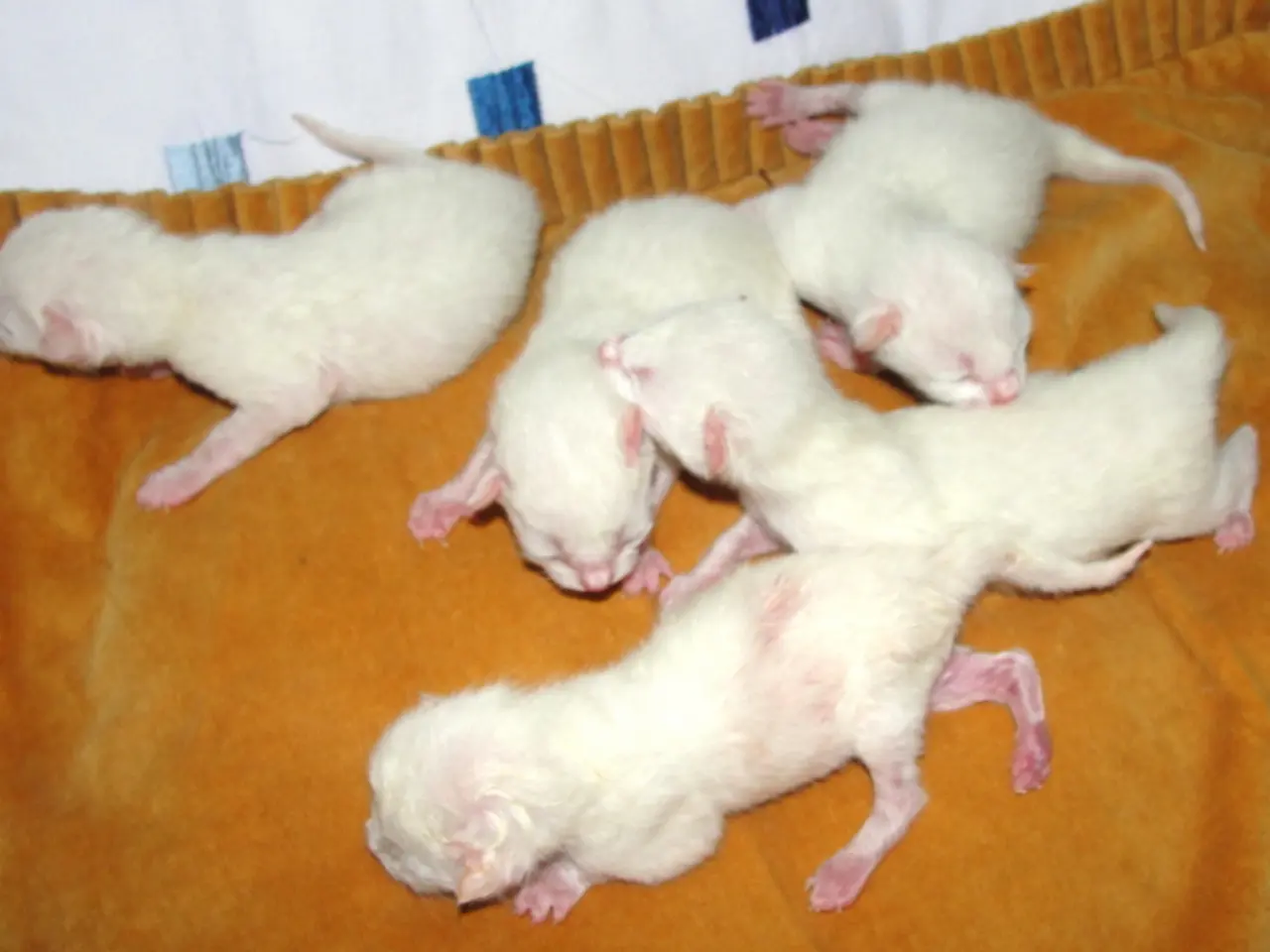In New York, research focuses on limiting rat reproduction to reduce stress levels
In the heart of Manhattan, residents of Harlem are breathing a sigh of relief as the city's innovative strategy to control rat populations begins to bear fruit.
Karen Del Aguila, a resident of Harlem, shares her experience, stating that with the new bins, she no longer feels the need to run between piles of trash to avoid rats. The city's waste revolution, launched in 2022, has seen the end of trash bags on the sidewalk and the installation of plastic bins that now accommodate 70% of waste.
The city's approach is a multi-front one, combining high-tech tools, public education, and targeted pest control methods. Caroline Bragdon, director of interventions for the city's pest control service, explains that these boxes are designed to make rats feel safe and comfortable.
The city uses advanced mapping tools and a mobile app for health inspectors to track rodent activity and better plan pest control actions. Beyond traditional methods like gassing burrows, officials are now testing rodent sterilization techniques to reduce breeding and thus rat populations over time.
The city educates residents on avoiding leaving food waste in public spaces, stressing rats by limiting their food supply, leading to fewer offspring and less rat activity overall. A rat can have up to twelve offspring per litter, with five to seven litters per year, contributing to rapid reproduction and dense populations.
Caroline Bragdon, director of interventions, explains that food deprivation decreases rat reproduction. The city's efforts are paying off, with a significant decrease in rat sightings recorded. In 2024, a 25% decrease was noted compared to the previous year.
Chinatown is the only neighborhood that has successfully controlled its rat population so far. The city has allocated 4.7 million dollars for rat control in 2025, compared to 3.5 million in 2023, indicating a commitment to continuing this initiative.
However, some residents question if the cleanliness is due to the mayor's election efforts. Small boxes containing different types of food have been installed in certain neighborhoods to study rat eating habits. The city hopes that the trend of controlling rat populations will spread to other neighborhoods in the coming months.
In conclusion, Harlem benefits from a combination of innovative technology-driven tracking and control, rodent sterilization, and community cooperation in waste management as the city's primary rat reduction strategies. Reducing rats' access to food is currently the most effective measure in controlling their proliferation.
- Karen Del Aguila, a resident of Harlem, expresses gratitude towards the city's innovation in science, specifically the new waste management system, which eliminates the need for trash bags on the sidewalk and provides plastic bins that accommodate 70% of waste, thereby reducing rat populations.
- In line with the health-and-wellness and lifestyle improvements of a rat-free environment, residents no longer have to worry about rat-infested streets, allowing them to engage in activities such as fitness-and-exercise, mental-health maintenance, and environmental-science exploration without fear of encountering rats.
- In order to curb rat reproduction, the city's finance department has allocated more funds for rat control in recent years, spending 4.7 million dollars in 2025 compared to 3.5 million in 2023, reflecting a commitment to ensuring the effectiveness of the rat reduction strategies.
- Despite the city's ongoing success in reducing rat population, some residents question the motives of the city administration, with speculations about the connection between the rat control initiative and the upcoming mayoral election in personal-finance and business scenarios.
- To better understand rat behavior and create more targeted solutions, the city's technology sector has developed advanced mapping tools and a mobile app for health inspectors to track rodent activity and plan pest control actions, representing the intersection of technology, environmental-science, finance, and lifestyle improvements.
- As part of the city's efforts to manage waste and prevent food waste in public spaces, they provide education to residents about the importance of proper waste disposal and limiting food waste in food-and-drink establishments, home-and-garden settings, and shopping centers.
- In a creative approach to studying rat eating habits, small boxes containing different types of food have been installed in certain neighborhoods, representing a unique collaboration between technology, environmental-science, and business sectors and hinting at future innovations in the realm of food-and-drink and home-and-garden offerings.
- As the city's strategies for controlling rat populations show promise and expand, the trend of healthier, safer living conditions can hopefully extend to other neighborhoods, benefiting residents across various lifestyles, businesses, and industries, from sports to travel-related endeavors.
- Ultimately, the city's success in managing rats through a combination of innovative technology, targeted pest control methods, public education, and community involvement represents a significant milestone in both environmental-science and personal-finance advancements, underscoring the power of collaboration and commitment to continued improvement in urban living.




